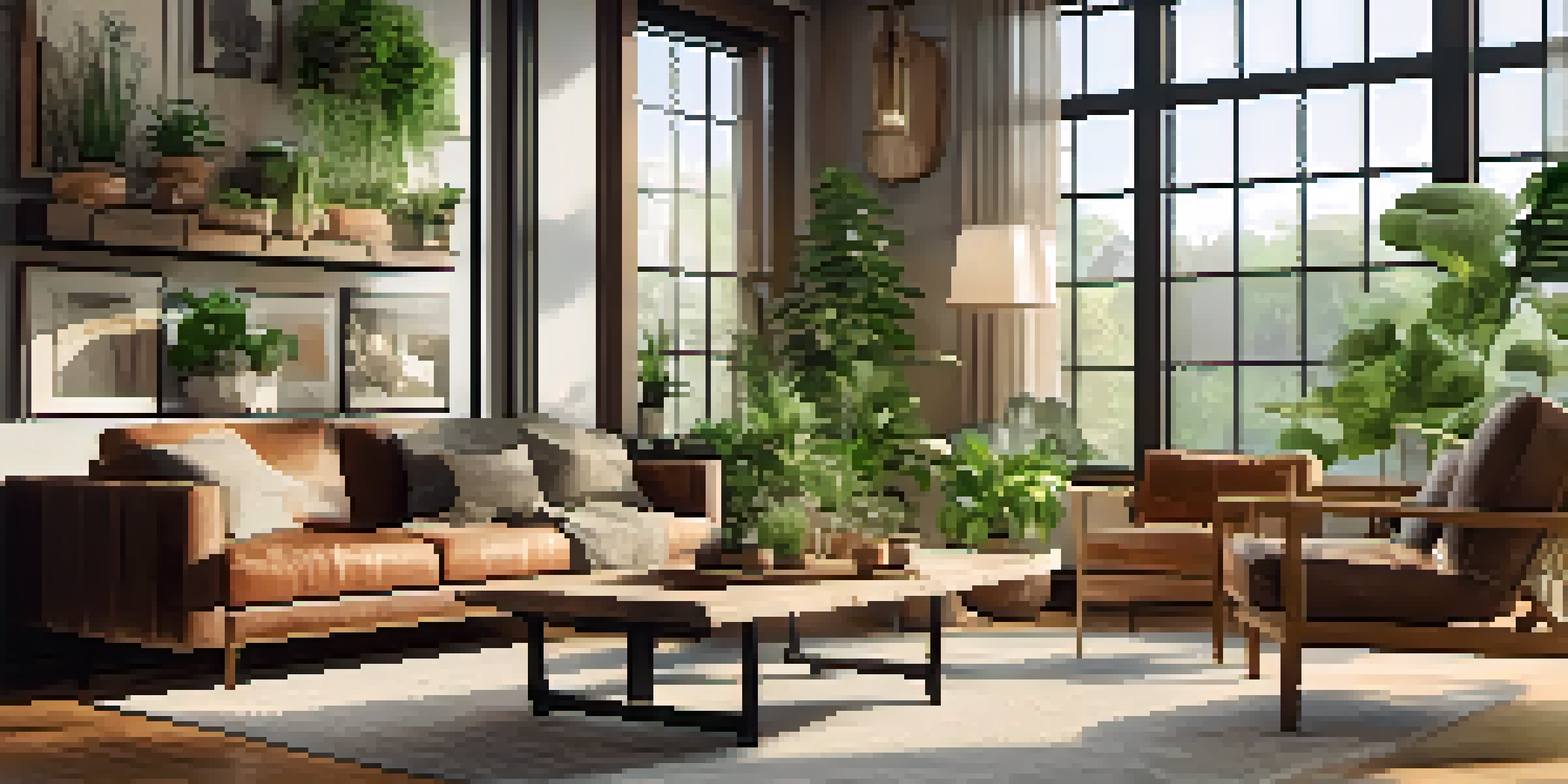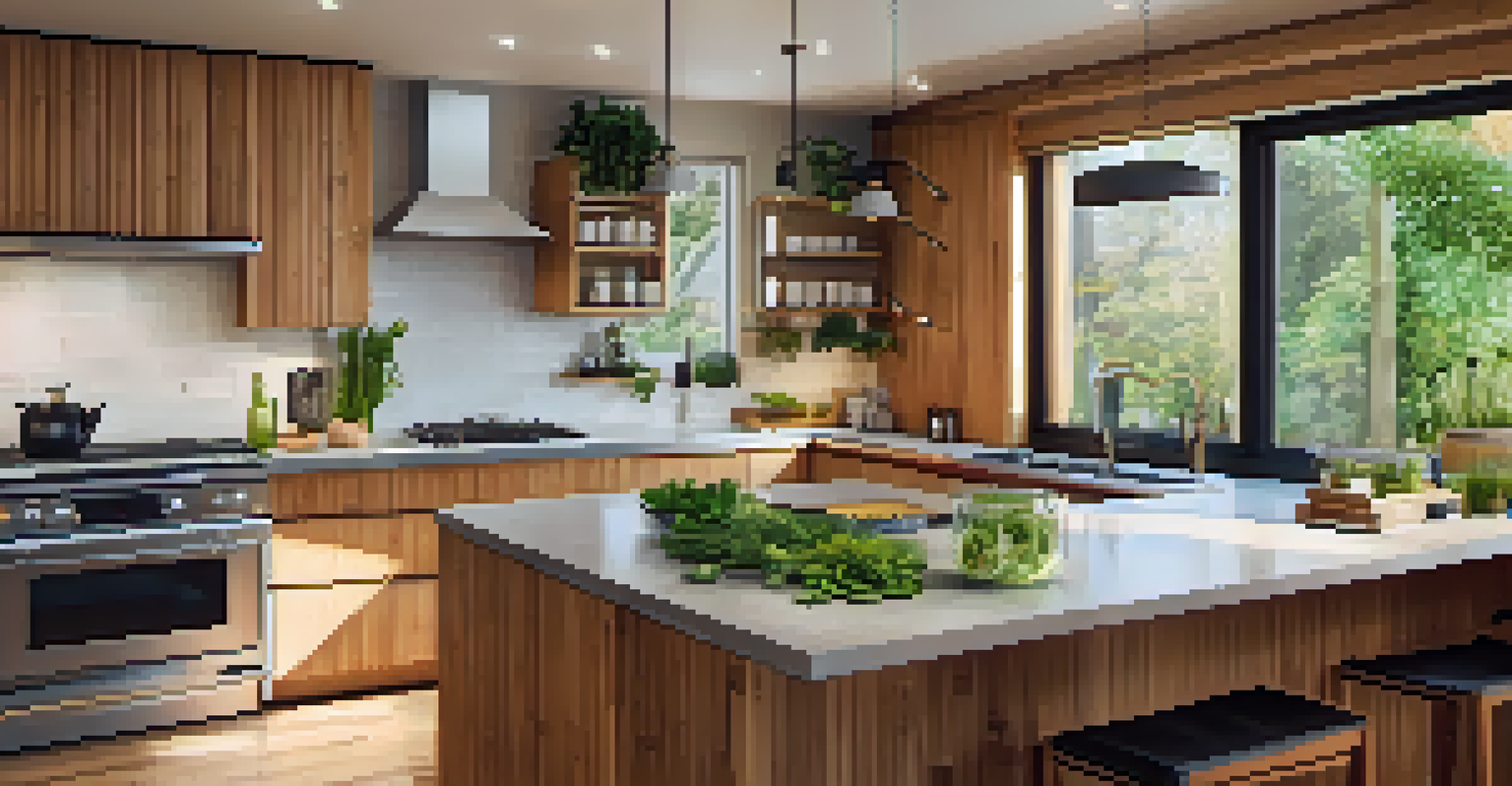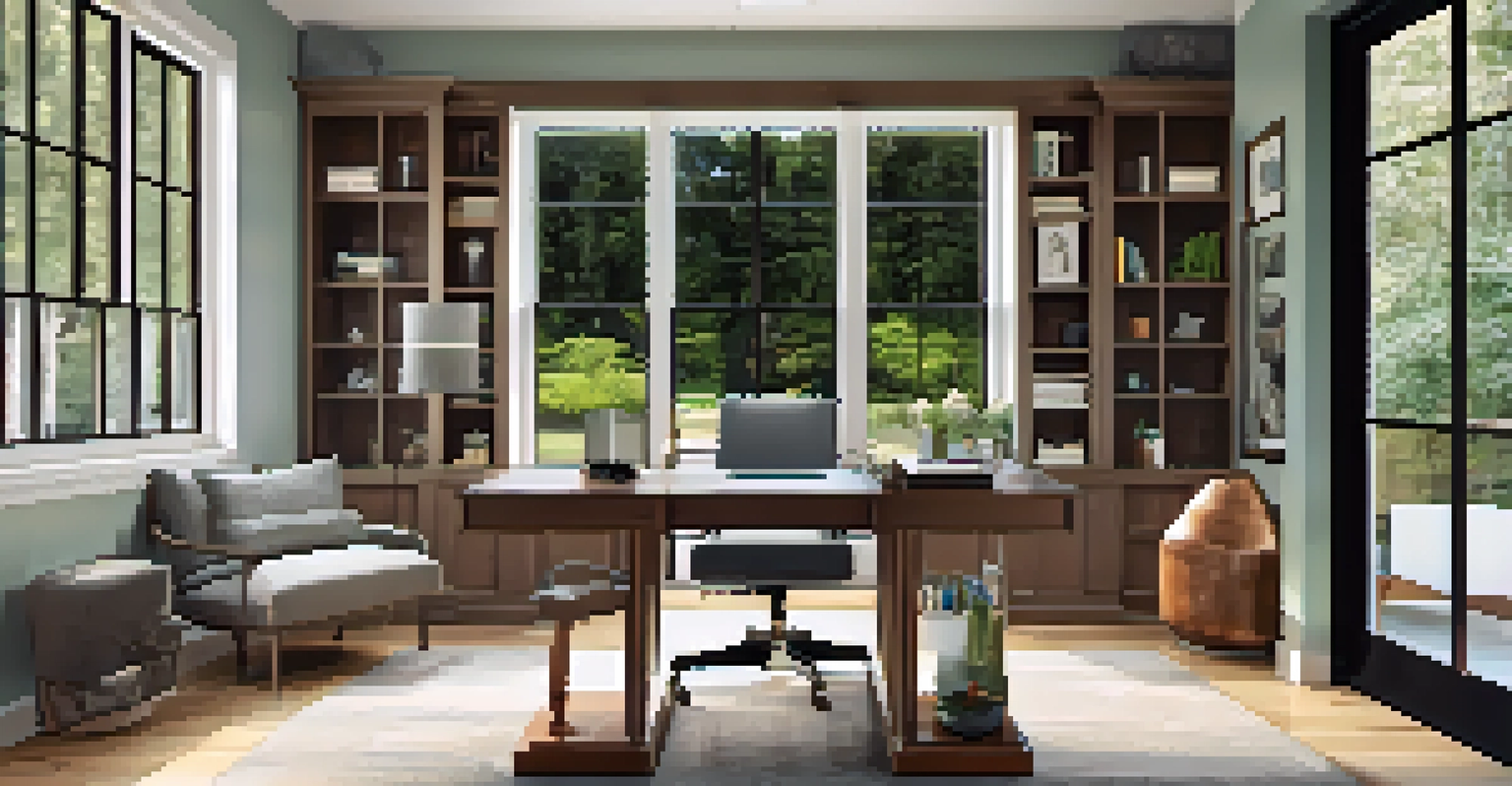Personalization in Home Design: Future Trends to Embrace

The Rise of Personalized Home Design: A New Era
Personalization in home design is more than just a buzzword; it's a transformative trend. Homeowners are increasingly seeking designs that reflect their unique tastes and lifestyles. This movement signifies a shift from generic spaces to tailored environments that resonate with individual identities.
Design is not just what it looks like and feels like. Design is how it works.
Imagine walking into a home that tells your story—every piece of furniture, color, and layout is a reflection of your personal journey. This desire for authenticity is driving the industry to create more customizable options. Designers are now embracing the challenge of crafting spaces that feel both personal and functional.
As we look to the future, it's clear that personalized home design is here to stay. The trend not only enhances aesthetic appeal but also contributes to emotional well-being, making our living spaces a true sanctuary.
Technology: The Heart of Customization
Technology is revolutionizing the way we personalize our homes, making customization easier and more accessible. Smart home systems, for example, allow homeowners to automate lighting, temperature, and security settings according to their preferences. This level of control creates a more comfortable and tailored living environment.

Moreover, virtual reality (VR) and augmented reality (AR) are emerging tools that enable homeowners to visualize their design choices before making any commitments. Imagine stepping into a digital version of your future home and adjusting elements on the spot! This immersive experience fosters creativity and helps clarify personal styles.
Personalization Transforms Home Design
Homeowners increasingly seek designs that reflect their unique identities, moving away from generic spaces.
As technology continues to advance, the possibilities for personalized home design will expand even further. Homeowners can look forward to increasingly sophisticated tools that simplify the customization process, ensuring their homes are as unique as they are.
Sustainable Personalization: A Growing Trend
Sustainability is becoming a significant factor in home design, and personalization is no exception. More homeowners are opting for eco-friendly materials and processes that reflect their values. This desire for sustainability means that personalized designs often incorporate elements that are both beautiful and environmentally responsible.
The best way to predict the future is to create it.
For instance, many are choosing reclaimed wood, recycled materials, and energy-efficient appliances. These choices not only reduce the carbon footprint but also add a unique character to the home. The combination of sustainability and personalization offers a chance to create spaces that are stylish and aligned with individual ethics.
As awareness of environmental issues grows, the integration of sustainable practices into personalized design will only become more prevalent. This trend empowers homeowners to make choices that support their lifestyle while caring for the planet.
Biophilic Design: Bringing Nature Indoors
Biophilic design focuses on incorporating natural elements into our living spaces. This trend reflects our innate connection to nature and promotes well-being. Homeowners are increasingly seeking to create environments that mimic the tranquility of the outdoors, using plants, natural light, and organic materials.
Imagine waking up to a sunlit room adorned with lush greenery—this is the essence of biophilic design. Not only does it enhance aesthetic appeal, but it also improves air quality and reduces stress. Personalization in this context allows homeowners to choose plants and materials that resonate with their preferences.
Technology Enhances Customization Options
Advancements in technology, like VR and smart systems, make it easier for homeowners to personalize their living environments.
As we move forward, biophilic design is poised to become a cornerstone of personalized home design. It offers a way to create harmonious spaces that reflect our love for nature while promoting a healthier lifestyle.
Cultural Influences: A Personal Touch
Cultural backgrounds play a significant role in shaping our design preferences. Homeowners are embracing elements from their heritage, infusing their spaces with meaningful traditions and symbols. This trend not only personalizes the home but also celebrates diversity and individuality.
Consider how a family might incorporate textiles, art, or architectural styles from their cultural background into their home. These choices create a narrative, allowing visitors to understand the family's story. Personalization becomes a powerful tool for expressing identity and fostering connections.
As globalization continues to influence design trends, the blending of cultural elements will enrich personalized home design. This approach allows for a vibrant tapestry of styles, making each home a unique reflection of its inhabitants.
Multi-Functional Spaces: Flexibility and Personalization
As lifestyles evolve, the need for multi-functional spaces has become increasingly important. Homeowners are looking to create environments that can adapt to various activities, whether it's working from home, entertaining guests, or enjoying family time. Personalization plays a key role in designing these versatile spaces.
Imagine a living room that seamlessly transforms into a home office or an entertainment area with minimal effort. This flexibility allows homeowners to maximize their space while tailoring it to their specific needs. Personalization in this context means choosing furniture and layouts that cater to individual lifestyles.
Sustainability and Personalization Unite
The trend of incorporating eco-friendly materials into personalized designs reflects homeowners' values and commitment to the environment.
Looking ahead, the demand for multi-functional spaces will only grow. Designers will continue to innovate, creating solutions that blend functionality with personalization, ensuring homes are both practical and reflective of their owners.
Future Trends: The Path to Personalization
As we gaze into the future of home design, several trends are emerging that emphasize personalization. From smart home technology to sustainable choices and cultural influences, the landscape is evolving rapidly. Homeowners are empowered to create spaces that truly resonate with their identities.
One key trend is the increased focus on wellness-focused designs, which prioritize mental and physical health. This includes incorporating elements that promote relaxation, mindfulness, and overall well-being. Personalization allows homeowners to tailor these features to their unique lifestyles.

In conclusion, the future of home design is bright and filled with opportunities for personalization. By embracing these trends, homeowners can create spaces that not only reflect their tastes but also enhance their quality of life.